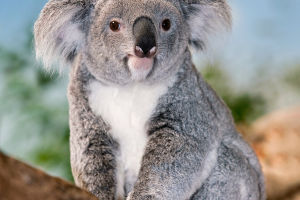Elephants, the largest land animals on Earth, are known for their immense size, strength, and gentle demeanor. Despite their bulky frames, elephants possess surprising agility and speed, particularly when faced with threats.
Let's explore how fast elephants can run, the mechanics behind their movement, and the factors influencing their speed.
Understanding Elephant Locomotion
Elephants have a unique way of moving that distinguishes them from most other animals. They walk on the tips of their toes, supported by a cushion of fatty tissue beneath their feet, which acts as a shock absorber. This design allows them to carry their immense weight—up to 6,000 kilograms in African elephants—efficiently.
When elephants accelerate, their movement resembles a fast walk rather than a true run. Unlike animals that lift all four feet off the ground when running, elephants always have at least one foot touching the ground. This motion, often called a “groucho run,” combines walking and trotting mechanics, giving them stability despite their size.
How Fast Can Elephants Move?
Elephants can reach speeds of up to 25 kilometers per hour (15 miles per hour) in short bursts. While this speed may not rival that of cheetahs or antelopes, it is impressive given their massive size. However, elephants are not built for sustained speed and prefer slower, steady movements over long distances.
Interestingly, the speed of an elephant varies by species:
1. African Bush Elephant (Loxodonta africana)
The largest of all elephant species, African bush elephants can reach speeds close to 25 kilometers per hour. Their robust build and muscular legs make them powerful but slightly slower than their smaller counterparts.
2.African Forest Elephant (Loxodonta cyclotis)
Smaller and more agile than bush elephants, forest elephants can achieve similar speeds but are often more maneuverable due to their compact size.
3. Asian Elephant (Elephas maximus)
Slightly smaller than African elephants, Asian elephants can run at speeds comparable to their African cousins, approximately 20–25 kilometers per hour.
Factors Influencing Elephant Speed
Several factors determine how fast an elephant can move, including:
• Age and Health
Younger elephants tend to be more agile and can run faster than older or injured individuals.
• Terrain
Elephants perform better on flat, open ground. Rocky or uneven terrain can slow them down and increase the risk of injury.
• Motivation
Elephants are more likely to run at full speed when threatened by predators or during moments of excitement, such as play or social interaction.
• Size and Weight
Larger elephants may be slightly slower due to their greater mass, but their powerful legs still enable remarkable bursts of speed.
Why Do Elephants Run?
Elephants typically run for specific reasons, as their energy-intensive movement is not their preferred mode of travel.
1. Escape from Threats
Elephants use their speed to escape predators like lions, tigers, or humans. Their ability to outrun most land predators ensures their survival in dangerous situations.
2. Territorial or Mating Behavior
During mating season, male elephants (bulls) may charge or run to assert dominance over rivals or pursue potential mates.
3. Play and Social Interaction
Young elephants, in particular, enjoy running and chasing each other as part of their social development.
4. Excitement or Alarm
Sudden changes in their environment, such as loud noises or unexpected events, may prompt elephants to run out of curiosity or fear.
Comparing Elephant Speed to Other Animals
While elephants are not the fastest animals, their speed is remarkable for their size. For comparison:
• Cheetah: 112 km/h (70 mph)
• Horse: 88 km/h (55 mph)
• Human: 44 km/h (27 mph; world record by Usain Bolt)
• Elephant: 25 km/h (15 mph)
Although they fall behind smaller, nimbler creatures, elephants’ ability to move at such speeds while maintaining balance and control is a testament to their unique physiology.
Conservation and Human Interaction
Understanding the speed and movement of elephants is essential for their conservation. Habitat encroachment and poaching often force elephants to flee from human threats, expending valuable energy and causing stress. Conservation efforts aim to minimize such conflicts by providing safe corridors and protected areas where elephants can move freely without fear.
Elephants may not be the fastest runners in the animal kingdom, but their ability to reach speeds of up to 25 kilometers per hour highlights their adaptability and resilience. These gentle giants demonstrate that even the largest creatures possess agility when needed.
By appreciating their unique movement and supporting conservation initiatives, humans can help ensure that elephants continue to thrive in the wild, inspiring awe and admiration for generations to come.
How Quickly Can Elephants Reach Top Speed?! 😱
Video by Wildest Kruger Sightings


